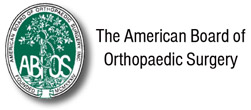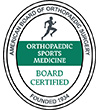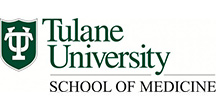Inside-out repair technique may help surgeons preserve meniscus function
In this video from Orthopedics Today Hawaii, Michael J. Stuart, MD, emeritus professor and orthopedic surgeon at Mayo Clinic Rochester, discussed the importance of meniscus preservation.
Sling immobilization may improve sleep quality vs. bracing after rotator cuff surgery
Sling immobilization for 6 weeks after arthroscopic rotator cuff repair yielded improved sleep quality, decreased anxiety and increased satisfaction with similar clinical outcomes compared with abduction brace use, according to study data.
Labrum SLAP Tear
Your labrum is soft tissue that connects the socket part of the scapula (called the glenoid) with the head of the humerus. A tear in the labrum results in insufficient cushioning between those bones.
Knee problems tend to flare up as you age—an orthopedic specialist explains available treatment options
Knee injuries are common in athletes, accounting for 41% of all athletic injuries. But knee injuries aren't limited to competitive athletes. In our everyday lives, an accident or a quick movement in the wrong direction can injure the knee and require medical treatment. A quarter of the adult population worldwide experiences knee pain each year
Symptoms and Treatment of Different Types of Kneecap Injuries
A kneecap injury can happen from a blow to the knee or a fall. Some injuries can also occur due to overuse. When you injure your kneecap—also called your patella—there may be damage to the surrounding soft tissues, such as a patellar tendon tear, or a fracture to the bone.
Feel a pop, then pain in your knee? It could be an ACL tear
You're playing tag with your kids, hitting a fast tennis return shot, landing after a gymnastics vault, evading a football tackle or jumping off a rock onto the beach. Suddenly, you feel a pop in your knee, then immediate pain followed by swelling. You may have just injured or torn your anterior cruciate ligament, or ACL.
What to Know About Shoulder Sprains and Strains
Shoulder sprains and strains are both injuries that can happen due to overuse of or trauma to the shoulder. While the symptoms of the two are similar, they involve different types of tissue within your body. Damage to these tissues can make it hard to move and use your shoulder.
Optimizing Knee Positioning During Arthroscopic Knee Surgery
In this Technical Note, we propose an approach to improve the existing knee positions using a metal round stool as a foot support. The method aims to reduce reliance on human assistants during knee arthroscopy procedures and restore the natural positioning of leg muscles, potentially improving procedural outcomes.
Why Do My Hips Hurt After Running?
Hip pain often occurs with running. While some level of soreness is normal, if your hips hurt after running, it may mean that you have injured yourself. Hip pain can be caused by injury to your muscles, bone, tendons, or other structures in your hip. Having weak core muscles, an old injury, or poor movement patterns can contribute to hip pain as well.
How to Wear a Shoulder Sling
A shoulder sling keeps your arm against your body and prevents you from moving it too much. However, if you wear a shoulder sling the wrong way, you might slow healing or injure your arm more.





